
This is another of the true bugs (Hemiptera) that I found under the loose bark of a decaying apple snag on my last day of work. There were several of the Mediterranean Seed Bugs (Xanthochilus saturnius) that I profiled yesterday, but only a single Rhyparochromus vulgaris. This is the first time I have found this little non-native Rhyparochromidae (dirt colored seed bugs), and because of the superficial similarity of its form and pattern to the related and congregated Mediterranean Seed Bugs I initially assumed it was just a dirty version of the same species. But closer examination revealed differences in the pronotum, and perusal of PNW Insects gave me a likely candidate.
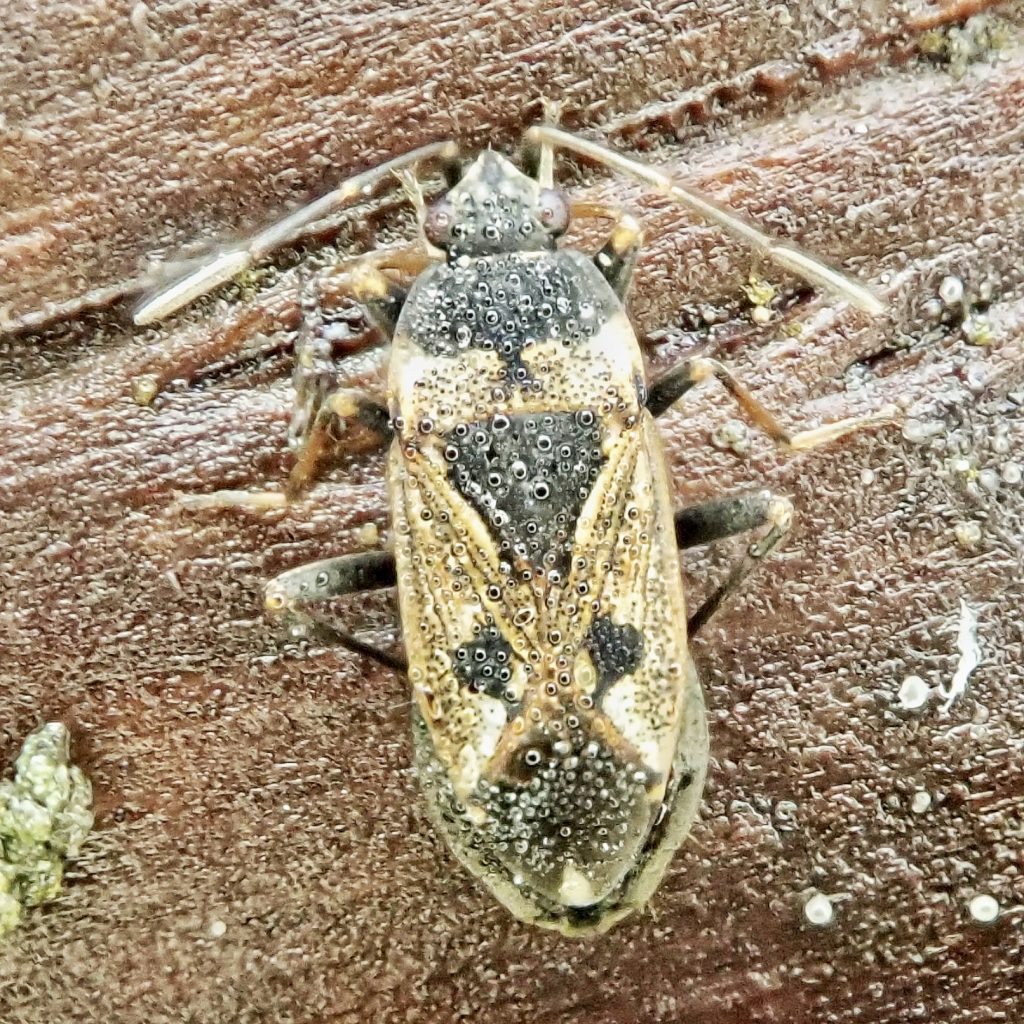
This is a fairly recent European immigrant. They were first identified in Washington state in 1999, and have since spread to Oregon, BC, Idaho, and western Montana, though they are still most populous in Washington. And, much like the Xanthochilus saturnius, they are not considered to be an agricultural pest due to their preference for gleaning seeds from the ground, rather than from the living plants. Rhyparochromus vulgaris also has a tendency to become a nuisance pest, with large aggregations prone to entering homes to find shelter from cold, heat, and aridity. They don’t bite, or do any particular damage, and they can be vacuumed or swept up and relocated, and cracks, crevices, and other avenues of ingress can be sealed if one finds their presence indoors to be disturbing.
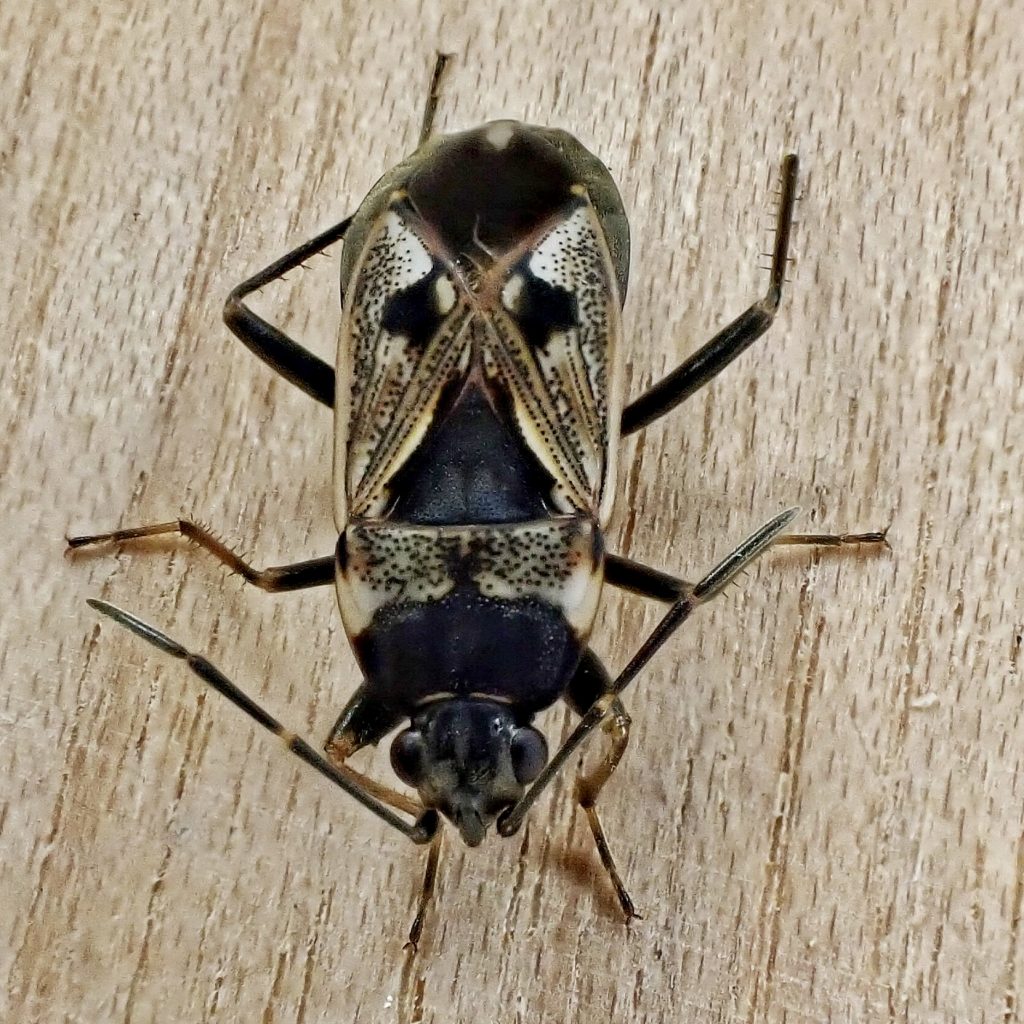
Description-Small (6-8mm long) brown and black true bug; front of pronotum dark, rear light colored with many tiny black punctures; scutellum black with a white and many punctured border; hemelytra light brown to white with many fine black punctures, and an irregular black splotch abutting an unpunctured tiny, white blob on the inner margin; membrane black, with a single white dot at the tip.
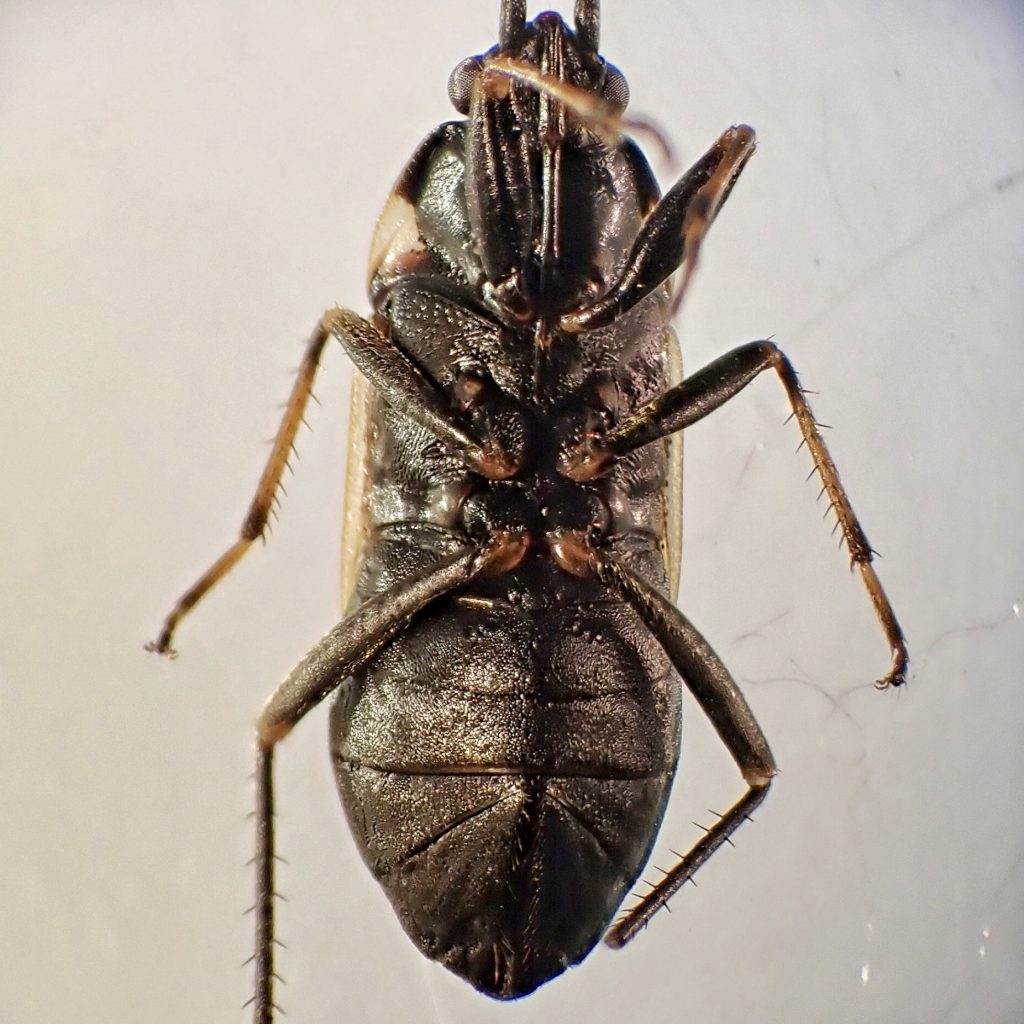
Similar species–Raglius alboacuminatus has spiny hind femora and larger white spots on the wing membranes; Xanthochilus saturnius has tan border on the whole lateral margin of the pronotum; Eremochoris sp. have light colored spots at the base of the visible dark wing membrane.

Habitat-Open brushy areas, forest edges, mixed forests and woods, working and fallow agricultural land and gardens, parks, weedy disturbed ground, around buildings.
Range-European native, now also found throughout (but thus far only in) the PNW in North America; probably region wide in appropriate habitat, but thus far more commonly found on the we(s)t side.
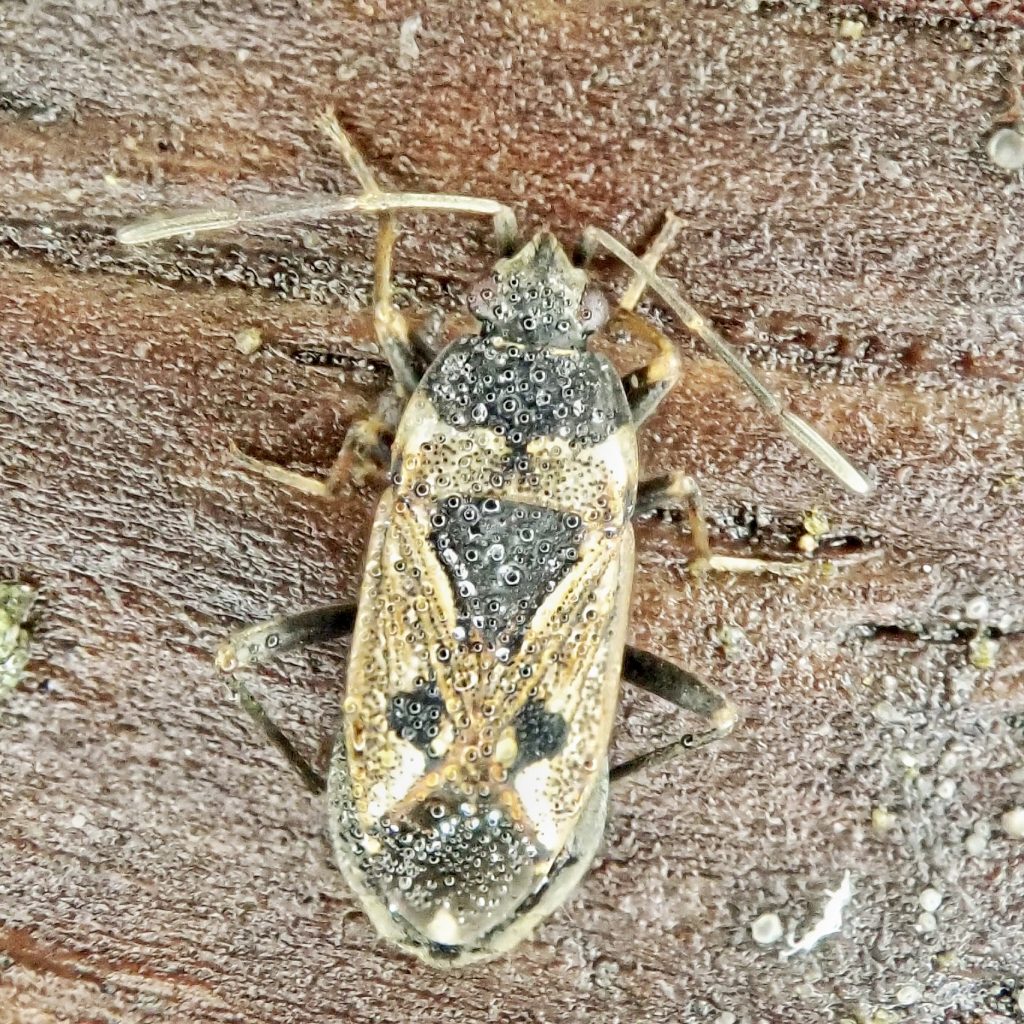
Eats-Both nymphs and adults feed on the seeds of many different kinds of plants including, but not limited to, strawberry, nettles, sage, poplars, and elms.
Eaten by-Presumably by insectivores of all classes.
Adults active-Diurnal; can often be found under cover of bark, logs, and boards, sometimes in great numbers, in the winter; year around, but often quiescent and under cover during the coldest and driest times.
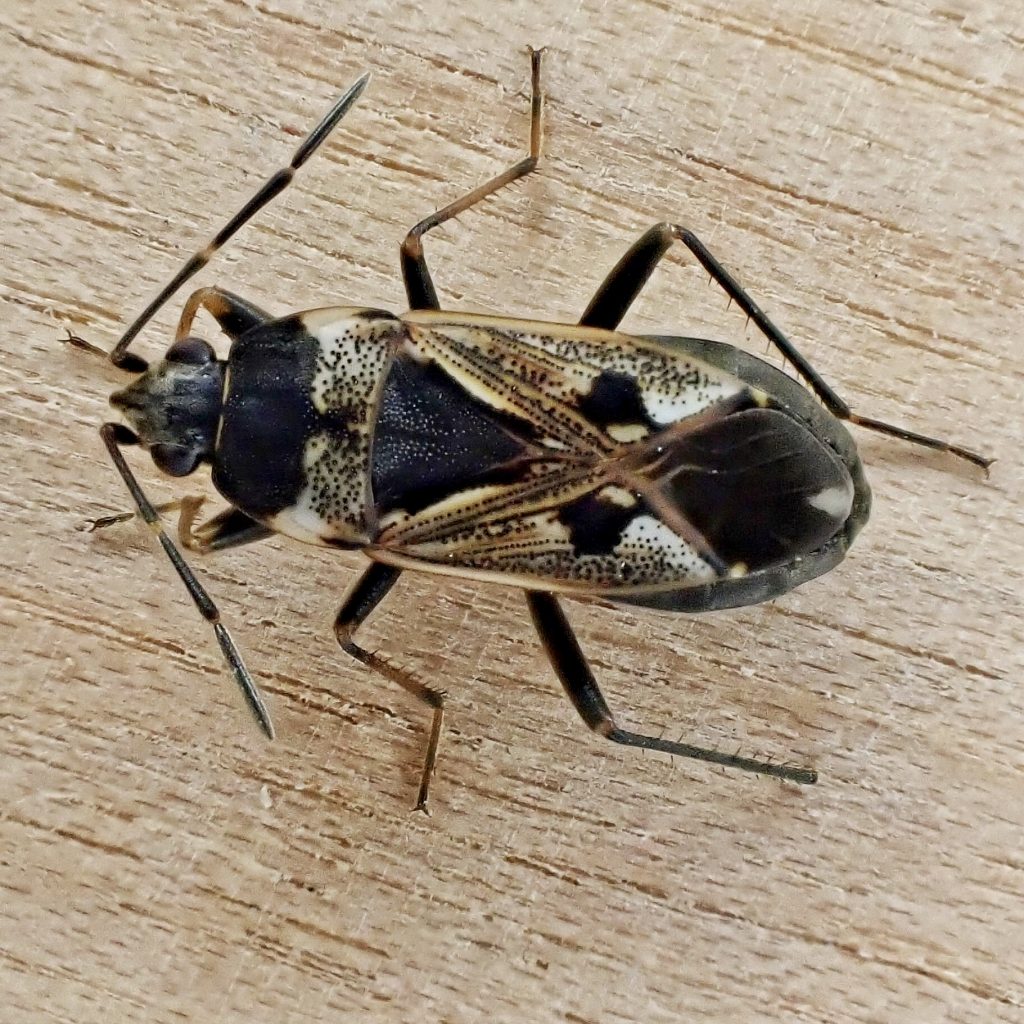
Life cycle-Overwinters as adults and 5th instar nymphs; females lay single eggs in ground duff starting in April; eggs hatch through July, and new adults appear in July; overwintering shelter is sought in mid fall.
Etymology of names–Rhyparochromus is from the Greek for ‘dirt colored’, and this species certainly has a rather dusty look about it. The specific epithet vulgaris is from the Latin for common, and would seem an accurate moniker based on their spread.
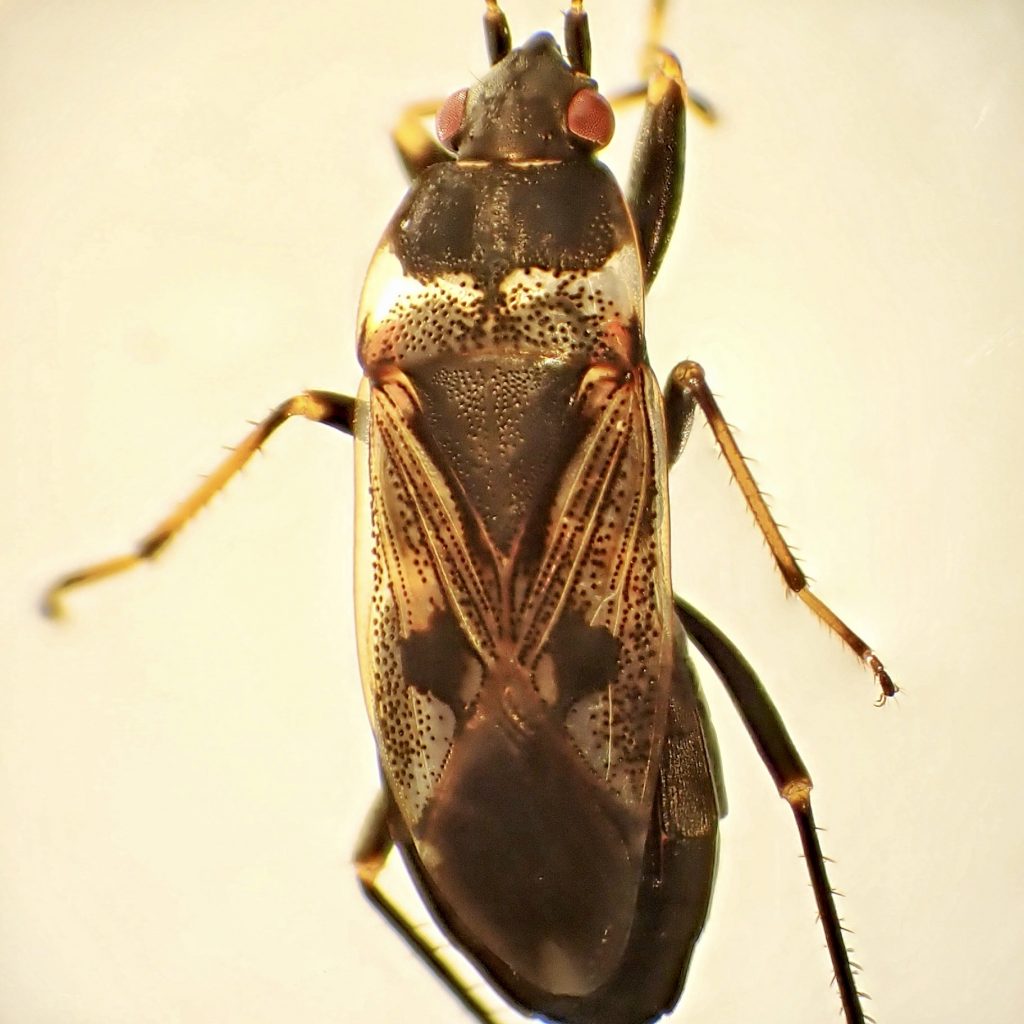
https://bugguide.net/node/view/102851
https://kidadl.com/animal-facts/rhyparochromidae-facts
Seed bugs (2001- 2005) | Pacific Northwest Pest Management Handbooks
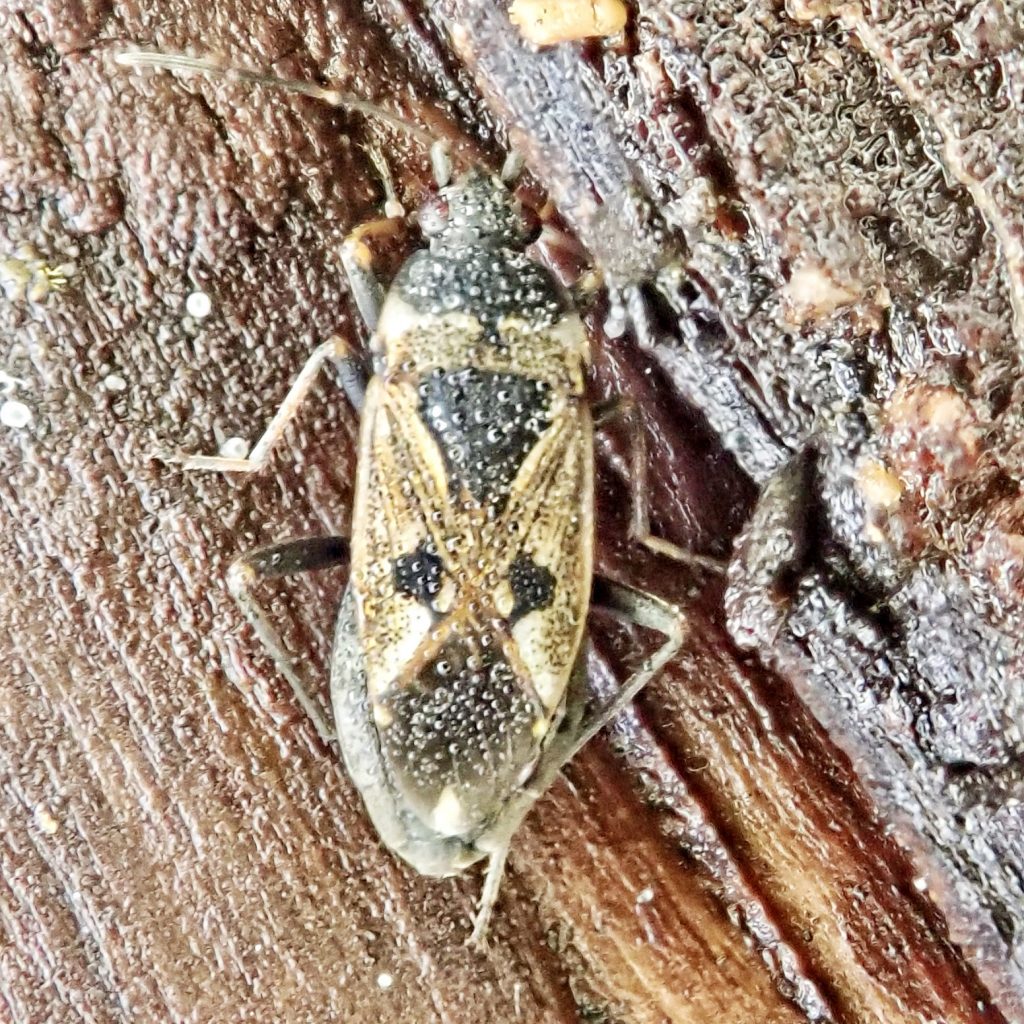
Beautiful:):) Thanks!